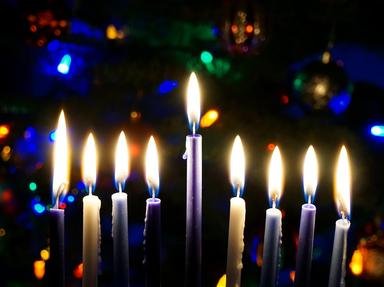Quiz Answer Key and Fun Facts
1. What is the literal meaning of the word "Sukkot"?
2. Sukkot is one of the three pilgrimage festivals in the Jewish holiday cycle. What are the other two?
3. The Sukkah, or festival booth must be a non-permanent structure and must consist of what?
4. There are two main symbols of Sukkot. One is the etrog (citron), what is the other?
5. The lulav is made from the branches of three different types of trees bound together. Which trees?
6. In order for the Etrog (citron) to be certified as kosher for use in the ritual of Lulav, what must not fall off?
7. On which day does Sukkot start?
8. For how many days does the festival of Sukkot last in Israel?
9. During Sukkot, one is supposed to welcome "Ushpizin" into his or her Sukkah. What the heck are "Ushpizin"?
10. Although Sukkot is full of symbolism that reminds us that our lives are frail and always at the will of God, Sukkot is, first and foremost a happy holiday. It is also referred to as Zman Simchateinu. What does this mean?
Source: Author
Smurphie
This quiz was reviewed by FunTrivia editor
ArleneRimmer before going online.
Any errors found in FunTrivia content are routinely corrected through our feedback system.


